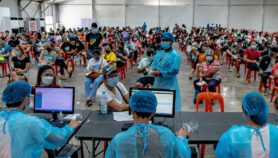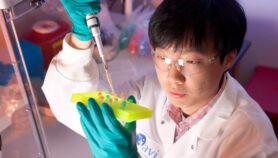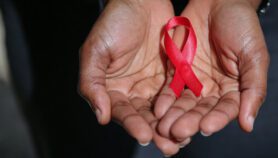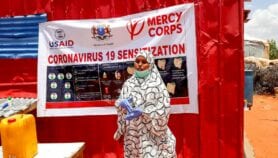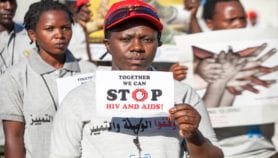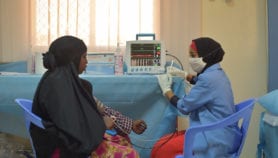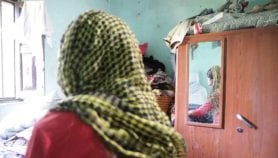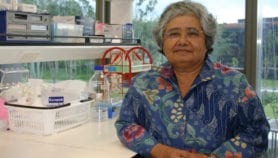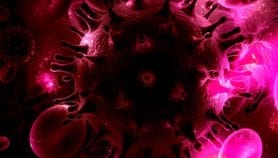28/08/19
我们接近“可行”的艾滋病毒疫苗有多近?
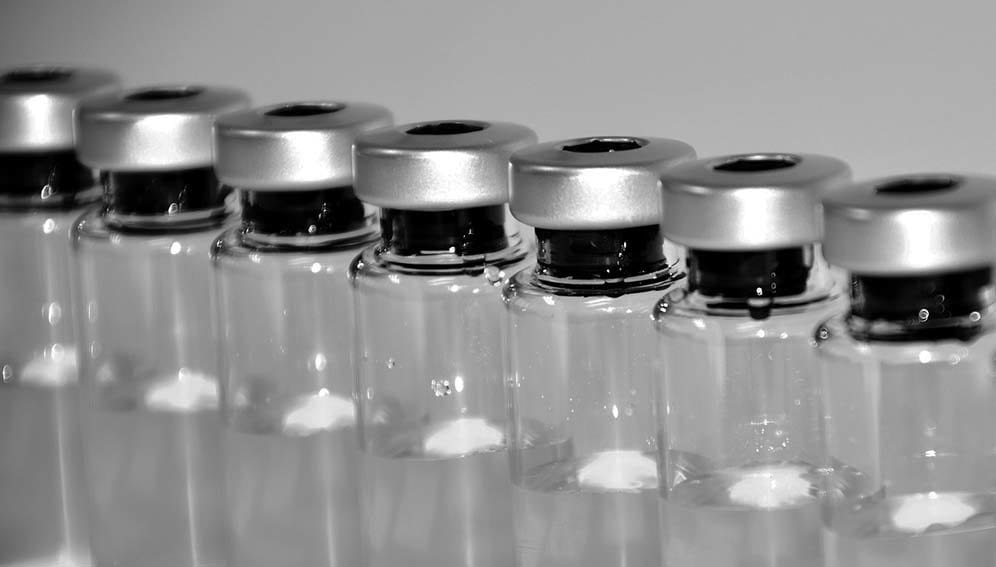
Send to a friend
The details you provide on this page will not be used to send unsolicited email, and will not be sold to a 3rd party. See privacy policy.
[Mexico City] Despite huge advancements in the treatment and prevention ofHIV/AIDS近几十年来,一种有效的疫苗仍然难以捉摸 - 迫切需要每年杀死70万人的全球大流行。
艾滋病是由人类免疫缺陷病毒(HIV)引起的,是Three影响发展中国家的人们以及结核病和疟疾的大疾病。
According to the WHO, 37.9 million people globally are living with the disease, of which 23.3 million have access to antiretroviral therapies (ART), the best treatment currently available.
This represents an increase of 2.3 million people receiving ART since 2016, according to the UNAIDS 2018global update。But it warns that “the scale-up of access to treatment should not be taken for granted”.
“The only way to control or eliminate a disease is with a vaccine. A vaccine will be cheaper than any other intervention and we need one because we are still no closer to controlling HIV,”
Glenda Gray, president of the South African Medical Research Council
问题是,新的感染一直出现:每年至少增加170万,其中160,000人是15岁以下的儿童。
Glenda Gray, president of the South African Medical Research Council (SAMRC),告诉scidev.net: “The only way to control or eliminate a disease is with a vaccine. A vaccine will be cheaper than any other intervention and we need one because we are still no closer to controlling HIV. We are missing all the milestones at a global level and at a local level.”
Larry Corey, principal investigator at the HIV Vaccine Trials Network (HVTN), highlights the magnitude of the global epidemic. “HIV is still the pandemic of our time; 5,000 people are infected every day,” he says.
自1980年代以来,科里(Corey)等研究人员一直致力于开发针对艾滋病毒的疫苗,尽管已经取得了重大进展,但仍无法在世界范围内扩展可行的保护。
为什么很难找到有效的疫苗?
最有效的疫苗使用抗体来中和病毒感染。但是科学家已经看到,这对艾滋病毒无效,因为该病毒繁殖和突变太快,无法有效。此外,研究表明,世界各地的艾滋病毒的亚型不同:虽然亚型B在北美和欧洲很常见,但在南非和东非占据了亚型C。
The virus has also evolved so that it is able to “hide” inside cells that are apparently free of infection, suppressing immune responses at an early stage of the disease. Also, Gray adds, its genetic diversity is greater than any other pathogen known to date.
“艾滋病毒一直是一种非常困难的病毒,”病毒学专家科里说。“它以我们从未见过病毒做得很好的方式掩盖自己。它非常聪明,它使用不同的机制来逃避免疫系统并持续存在。它比任何其他病毒都更有效。”
Although animal models have been widely used to research vaccine efficacy, these are usually expensive and don’t guarantee that drugs will work in humans. Due to its genetic diversity, the HIV virus is able to provoke persistent infections that our immune system is not able to fight, so a vaccine has to do much better than our bodies.
研究的重点是了解必须产生哪些类型的免疫反应才能赢得与疾病的斗争。
The idea is to work with antibodies that are capable of identifying and attacking the virus before it widely infects the body. In other words, what are the weakest aspects of the virus that a vaccine can work on to be effective.
没有人类模型显示艾滋病毒的治愈方法,这构成了进一步的障碍。科里解释说:“我们没有疫苗的原因之一是没有人类治愈艾滋病毒。”“在7200万中零。对于每种传染病,至少有几个人可以治愈自己,但在艾滋病毒中并非如此。”
我们现在在哪?审判及其承诺
大型临床试验测试疫苗功效将军inst HIV started producing results back in 2003, and although a vaccine is not ready yet, significant progress has been made.
在人类已测试的100多种疫苗中,到目前为止,最大的成就是RV144试验,也称为“Thai study”. The research showed the first promising results of an experimental vaccine, but the success was partial: participants were 60 per cent less likely to become infected in the few months after being vaccinated, but this dropped to 50 per cent after three-and-a-half years.
Linda-Gail Bekker, former president of the International AIDS Society, tellsscidev.net:“重要的是,我们知道可以实现[疫苗接种]……泰国疫苗教会了我们。现在,我们还找到了保护和创建抗体的方法,这些抗体非常有效地结合和中和病毒。”
在南部非洲的大规模3期研究中,正在对泰国疫苗的修改版本进行测试。希望它能将感染的风险降低至少50%,并延长其保护期。结果将于2021年公开。
Another recent promising advancement was announced in July during the 10ThInternationalAIDS Conference在墨西哥城:“ Mosaico”疫苗,因为它由不同的病毒菌株组成。这种疫苗已被证明是有效的in tests involving women in Africa and will be further assessed in men who have sex with men (MSM) and transgender populations in the US, Argentina, Brazil, Italy, Mexico, Peru, Poland and Spain.
“Mosaico is the best vaccine we’ve seen in protecting animals. Now we actually have to see if it works in humans,” says Corey.
Bekker, who is deputy director at theDesmond Tutu HIV Centre,认为如果该疫苗有效,该疫苗应该会产生全球影响。尽管Mosaico的研究人员对这种新的“全球”疫苗持谨慎乐观,但其他说expectations should be tempered as the virus has proven to be highly dynamic and able to rapidly change, evading all immune responses.
An alternative path in case Mosaico doesn’t work, Corey believes, is to use identical monoclonal antibodies, to see whether this works better than the Mosaico approach. “We’re going to look at the data and see if it’s one or the other, or if it might be a bit of both. So, we do have an alternative approach,” he adds.
最近editorial in自然concludes: “Ultimately, only efficacy studies will determine whether any of these promising concepts are capable of reducing infection rates or the levels of pre-existing infection. But the pipeline of early phase clinical studies and accelerated pace of translation to the clinic are very encouraging developments for the field.”
HIV future
至少找到部分有效的疫苗对于艾滋病毒反应至关重要。
根据全球性健康慈善机构Avert, the biggest reduction in new infections would be achieved by a combination of oral pre-exposure prophylaxis (PrEP), universal antiretroviral treatment for people already living with HIV, and a vaccine. “An HIV vaccine is a more realistic prospect today than a decade ago and an optimistic forecast of HIV vaccine availability is that one might be available by 2030,” the organisation says on its website.
尽管艾滋病毒研究历来收到莫re financing than any other infectious disease, different experts have warned that continuous investment has come under threat. “Almost all vaccine innovations are in the public sector; pharmaceutical and biotechnology companies sit on the sidelines,” says Gray.
“It is a very high-risk business and therefore businesses have shied away from it,” adds Corey. An exception has been the Mosaico study, a public-private partnership sponsored mainly by Janssen Vaccines & Prevention, with funding from the US National Institutes of Health’s National Institute of Allergy and Infectious Diseases (NIAID) and supported by the HVTN, headquartered at the Fred Hutchinson Cancer Research Center in Seattle, which facilitates its implementation.
According to Corey’s estimations, vaccine research investment in the US, the largest investor, receives $700 million annually from the government and $250 million from the Bill & Melinda Gates Foundation. “It has been really the US government and the philanthropy that have put the heavy-lifting in getting us to the point where at least there is some sense of optimism that we can develop an HIV vaccine,” he says.UNAIDS says a scaling-up of HIV vaccine research is urgently needed. “For the past decade, investments have remained steady, at around US$900 million per year, which is less than 5 per cent of the total resources needed for the AIDS response,” it said in astatement在2018年。
“By scaling up investments in HIV vaccine research, diversifying funding and attracting the best scientists from around the world, a vaccine for HIV could become a reality.”


